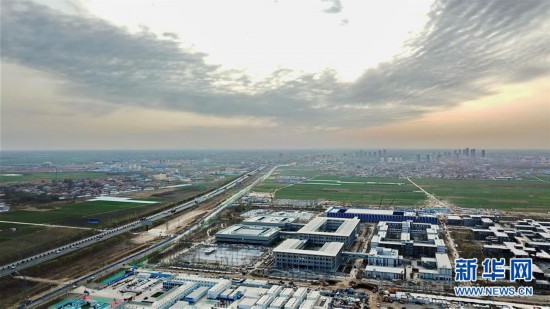
Outcomes of China’s Opening Up and Reform only Tell Half the Story
The remarkable transformations resulting from China’s 1978 reform and opening up policy undoubtedly speak volumes about the value of those milestone decisions.
By Haifa Said
The remarkable transformations resulting from China’s 1978 reform and opening up policy undoubtedly speak volumes about the value of those milestone decisions. However, the outcomes themselves are by no means the whole story.
To look at such a diverse and multidimensional process, marking its 40th anniversary this year, from the perspective of merely measuring achievements, grand as they are, would be a simplistic reading. What makes China’s most defining change in modern history interesting, aside from its outcomes, is the unique way these reforms have been carried out.
For one, literal adherence to the ideology of the ruling Communist Party have become no longer the sole criterion and guarantor of truth. Instead, moving from ideology to pragmatism, policy reform has been built on a new norm of practical experimentation and direct implementation.
Leader Deng Xiaoping, the “father of reforms,” struck a courageous and realistic note in a 1979 speech when he called upon China to talk more about economics and less about politics. While not ignoring the theoretical basis of the political sphere, he said equal effort should also be devoted to the applied theory of economy, especially in the fields of agriculture, industry, commerce and management.
The reality was that China at that time was one of the poorest countries in the world, lagging behind not only developed countries but also its rapidly developing Asian neighbors. Deng’s philosophy and that of former Premier Zhou Enlai were in line with this need to bridge the development gap by introducing ideological reviews, as well as minimizing the focus on theories that stressed inevitable conflict between socialist and capitalist countries.
Their aim was to make Chinese socialism more practical and consistent with urgent efforts to achieve economic gains in order to effectually improve the living conditions of long-impoverished citizens.
Δ Xiongan New Area, China [Photo/Xinhua]
Deng Xiaoping’s reform policy, considered radical at that time, was officially embraced at the 3rd plenary session of the 11th Central Committee of the Communist Party of China (CPC) in December 1978. The policy outlined the need to follow new economic management methods, introduce advanced technologies, boost economic exchange with the outside world and scale down centralism in the planned economy system to spur vitality and development.
Among other results, academic competence, rather than students’ family background and political affiliations, became the new criterion for university admission. In economic work as well, professionalism and efficiency were set as the new standard for promotion, further enhanced by the introduction of an incentives system and a policy of paying according to the amount and type of work done, which was a fundamental departure from the previous egalitarian “Iron Rice Bowl” policy.
Unlike in the “Great Leap Forward” era, when disastrous human losses resulted from the overstretching of agricultural resources based on unrealistic administration policies, the more pragmatic approach of the post-1978 period took into account the economic and social realities to achieve solid nationwide development.
Gradualism and experimentalism shaped the new approach, in which partial reforms were applied in one field and, upon success, were expanded and approved as national policy.
In addition, there was a reduction of state interference – a significant departure from the centrally planned economy system – and an increase in the independence of various economic leadership roles in managing resources and exploring reforms. These changes gave rise to free market activities and positive competitiveness, which gradually led to an abundance of products and higher growth rates.
A more empirical approach allowed authorities to track not only the progress of various reforms, but also the administrative mechanisms and policies needed to shape them, which gradually lent them more credibility.
The resulting economic and social outcomes of the reforms came about through the continuous assessment and readjustment of policies to deal with new conditions and arising challenges, such as those related to environmental damage, energy consumption, income inequality and social services corruption, among others.
It is this dynamism and blend of methods that aligned free market practices with the socialism-based overall guidance of the CPC, leading to China’s transition to a mixed economy and to its unique pattern of economic development. This unique pattern has, in turn, shaped China’s upheld line of “Socialism with Chinese Characteristics.”
It is on the continued positive guidance of the CPC leadership that much of the future success of China’s development is contingent. This fact is what makes Party chief and President Xi Jinping’s emphasis on the Party’s absolute leadership entirely relevant.
Source: China.org.cn
Haifa Said is chief editor of the English Department at the Syrian Arab News Agency.
Opinion articles reflect the views of their authors, not necessarily those of China Focus
 Facebook
Facebook
 Twitter
Twitter
 Linkedin
Linkedin
 Google +
Google +











